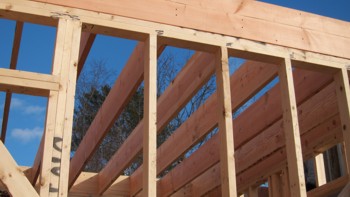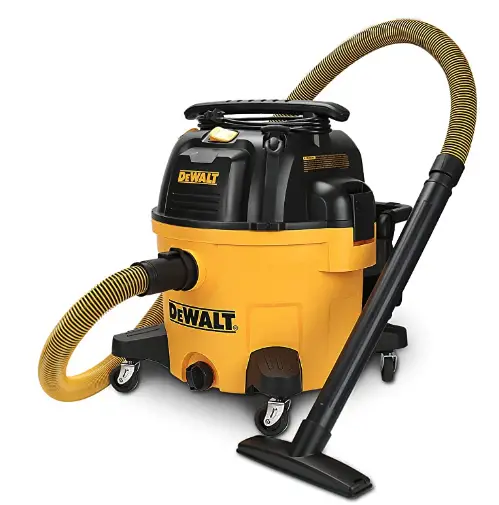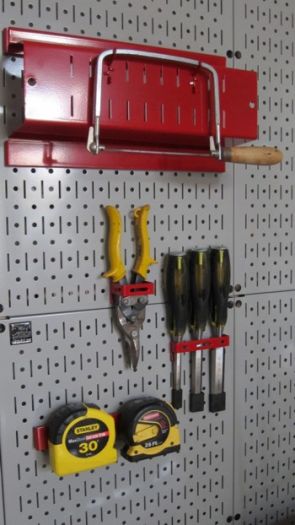Wet Dry Vac Secret Tips
The tips in this guide were supplied by hundreds of subscribers to my FREE AsktheBuilder.com newsletter. I'm grateful to them for their willingness to share what they've discovered.
The inspiration for this guide came from a very good friend and neighbor, Bob Broadhurst. Bob emailed me one day commenting on how he had used his wet-dry vac to unclog a tub drain.
That got me to thinking about all the other useful and crazy things you can do with these machines. You're about to discover these machines can be used for quite a bit, but first read about how one could have saved my bacon.
I know my mother wishes that wet-dry vacs had been invented when that pillow fight of mine moved outdoors that summer night. My neighborhood friends and I created quite a mess on our neighbor's, Ms. Zint, front lawn in the middle of that humid night.
Ms. Zint, whose twin sister was the Wicked Witch of the West, glared at all of us as we tried picking up thousands of feathers by hand and with a rake. It didn't take long to see that wasn't working so my mom sent me to get our standard upright vacuum. Oh was my mother embarrassed and angry.
I BEG you to read through the entire list and tell me if one of the last ones isn't the best tip of all. I hope she wasn't downwind of the hose!
Sincerely,
Tim Carter
Founder - www.AsktheBuilder.com
INTERIOR
PLUMBING USES:
Unclog Tub Drains - Remove Hair
Bob Broadhurst - Near NYC, Fred Casper - Juliette, GA
Remove Water From Toilets and Toilet Tanks for Repair Purposes or Winterizing
Jim from CT, Richard Grossman, Dustin Summers, Rosemary Hughes, Mike Baron - Jonestown, PA, Doug Behnke - Delaware, OH, Frank Job, Thomas Webb - Cincinnati, OH, Greg - Kalamazoo, MI, Richard Cowan, Randall Johnson - Raleigh, NC, Paul Vawter - Columbus, OH, Billy - West Coast, Paul Jones - Swedesboro, NJ
Remove Grit, Dirt Muck From Sump Pit
Ines Illgen
Drain Water Lines BEFORE Soldering Using Vac Suction
Very Satisfied Newsletter Reader, George Husted - Muir, MI, Paul Vawter - Columbus, OH, Tony Veltri - Lakeland, TN
Clean Drain Line from Dishwasher to Sink
Kevin - Indianapolis, IN
Remove Water or Salt Pellets from Water Softener
Rafael Goyco - San Antonio, TX
Clean Sediment from Water Heater
Bob Casey, George Axtell - Hannibal, NY
Suck Hot Water Gone Cold While Thawing Frozen Septic Line
Mike Schweitzer - Stone Lake, WI
Blow Out Overflow Drain in Bath Sinks
Tim Tuohey - White Lake, MI
Blow Out Water Lines to Winterize a Summer Home
Quentin Day - Peterborough, Ontario CA
Locating Sewer Gas Smell
Anonymous
ELECTRICAL USES:
Pull String Through Conduit - Attach String to Small Cotton Ball
Jim - CT, Todd Fratzel - Newport, NH, Purcell McCue - VA, Barry - Tiverton, RI, Doug Dobbs, Mike Hancock - Rochelle, GA, Richard Cowan, Paul Edworthy - Toronto, Ontario, Bob Lyons - Avon, OH
Aid in Changing Light Bulbs
Roger Hamel
HVAC USES:
Unclog AC Drip Tray Drain Line
David Richie
Clean Out Dryer Vent Line
Mike, Bob Casey, Judy McQueen, Jerry Gershner - Ossining, NY, Tommy Starnes - Hampton, VA, Claude Mellish - Painted Post, NY
Suck AC Condensation Line - Prevents Clogs
Charles Picard, Marilyn Barker-Ayer - New Port Richey, FL, Tommy Starnes - Hampton, VA, Archie Paul - Wellington, FL
Blow Out Dryer Lint - Be Sure Dryer is Empty - Close Dryer Door
Patricia Lee - Tullahoma, TN, Ann Suja - Zionsville, IN, Butch Stearnes - Pekin, IL
PAINTING USES:
Remove Spilled Paint From Carpet
Amy R., Wichita, KS, Jonathan Spicker - Blue Ash, OH
CARPET CLEANER:
Use any cleaner and then VAC up liquid. Carpet is NEW!
Joanie Thole - Residence Unknown
MISCELLANEOUS USES:
Drain an Aquarium
Aki
Remove COLD Ashes from Fireplace Ash Dump
Kevin - Indianapolis, IN
Clean Up Water From Washing Machine Drain Hose Mistake
Bobby - Kansas
Remove Air from Clothes Packing Bags
Niki Moore - Houston, TX
Defrost a Freezer - I use it all the time, but I use a hair dryer to heat the ice. The ice melts so fast, a wet/ dry vac can pull the water off the floor of the freezer. I can defrost 3 inches of ice in 15 minutes. Dry the freezer and get it running again in that time.
Richard Friese - Mundelein, IL, Moshe Miller - Brooklyn, NY
Pick Up Items in Tight Places - Cover Hose with Panty Hose
William Roller, Randall Johnson - Raleigh, NC, James Turnham - Brooklyn Park, MN
Massage Scalp After Haircut - Clean Hair from Floor
Greg - PA
Blow Air Into a Water Bed to Straighten Out Baffles and Liner After a Move
Ann Suja - Zionsville, IN
Pull Silver Speaker Center Circle Back Into Place
Garry Blight - Yarram, Australia
Emergency Dentist Suction Pump - Saved Patients from Drowning!
Dan Jenkins DDS - Riverside, CA
Suck Up Flood Water from Basement
Greg Weglarz
Clean Refrigerator Coils - Blowing and Sucking
Craig - Hartford, CT
Retrieve Sock From Behind Clothes Dryer
Michael Laws - Summerville, SC
Blow Off Scroll Saw Projects
Tony Campise - Groves, TX
Vacuum Expensive HEPA Filters
Use Vac Handle Tubes as Long Filler Devices for watering Christmas Tree
George Babcock - Fair Oaks, CA
Appliance Repair - Use to remove water from washing machine or dishwasher hoses
Garry - Bristol, VT
EXTERIOR
LANDSCAPING USES:
Suck Up Acorns
Jeffrey Fordell - Canton, MI, Mike Smith - Benbrook, TX,
Suck up Sweet Gum Balls and Pecans
Ben Wetherill, Steve Marcus - Charlotte, NC
Suck up Beechnuts
Barb
Suck Up Olives
Jeffrey Barker - Orange, CA
Blow Out Garden Hose Before Winter
Ken Murray of Cornwall, Ontario, Canada
Suck Leaves From Outdoor Pond
Brian from Mississauga, Ontario, Canada
Remove Water From Outdoor Pond
Al Forte - Odessa, TX
Blow Out Lawn Sprinkler System
Brian from Mississauga, Ontario, Canada
Creating Mulch - Use to Grind Dry Leaves
Anonymous Monkey Shines
Remove Seeds from Plants including Buckwheat
Ines Illgen, Bob Moorman - Troy AL
Remove Stones from Grass Put There by Snow Plowing and Blowing
Darryl Reid
Substitute / Stand-in Blower for Leaves / Grass Clippings / Dust
Mike Hart, Barbara Belkoff, Asa - Portland, OR, Rance - Fredericksburg, VA, T. Ball - Northwest, PA, Richard Cowan, Larry Hall - Birdsboro, PA, Judy McQueen, Delora, Steve - Albuquerque, NM
Remove Occupy Paul's Drains Critter Encampments in Downspout Drain Lines
Paul - Hebron, CT
Blow Out Water from Pond Recirculation Lines
Greg Ruble - Waukee, IA
Suck Up Dirt Around Broken Sprinkler Lines During Repair - Dirt Clogs Head
Daniel Yankovich - Phoenix, AZ
POOL and HOT TUB USES:
Blow Up Kids Pool Toys and Air Mattresses
Scott - Lynnwood, WA, Jeff Campbell - Framingham, MA, Dave - MN, Brenda Hernandez - Frederick, MD
Remove Air From Pool and Lake Toys for Winter Storage
Dave - MN
Blow Up Pool Freeze-Compression Pillow Under Pool Cover
Jeff Campbell - Framingham, MA
Blow Out Pool Filter Lines
John Adams, Mike Hart, Rick Morse, Jean-Marc Pelletier
Drain Hot Tub
Aki, Steve Tobin - Roswell, GA
Blow Out Pool and Hot Tub Filters
Steve Tobin - Roswell, GA
Remove Water from TOP of Pool Cover
Carl Iaccarino - Guilford, CT
Remove Sand From Pool Filter
Wayne Graff
INSECT and ANIMAL USES:
Remove Hornets, Yellow Jackets, Wasps from Nests
Pete Capitain - North Babylon, NY, George Blakey, Mark Wagner, Matt Anderson, Kevin Alberts - Ada, MI, Richard Havanec - Derby, CT, Ken Rupkalvis - San Antonio, TX, Barry Stewart - Chilliwack, BC, Canada, Ed Frost - Bent Mountain, VA, Paul - Hebron, CT
Suck Up Stink Bugs
Ferenc Ayer - Vienna, VA
Suck up Flies in Abandoned House
John Leek - Chestertown, MD
Suck Up Mice in Complicated Box Equipped with Microswitch, Relay and Peanut Butter
Matt - Jersey City, NJ
Doggie Blow Dryer After Bath - Be Sure No Dust in Canister - Muffle to Protect Ears
Kent LaVake - Stillwater, MN
Vacuum Hair Directly From Dog
Anonymous - Cincinnati, OH, Judy McQueen
Remove Box Elder Beetles From Vinyl Siding
Karen Vogler - Staten Island, NY
Clean a Horse - Blow Dust - Best When Too Cold to Wash
Jack Chaneyworth - Waco, TX
EXCAVATION USES:
Electric Excavator - Suck Dirt and Rocks From Narrow Holes or Trenches
Jim Stark - North Las Vegas, NV, Dan Davies - Atascadero, CA, Tom Warmoth - Roscoe, IL, Mike Haucke - Seattle, WA, Bruce Krouse - Gilbert, PA
Fence Post Removal - Remove Dirt from Sides of Post
Andrew - Perch, Australia
Remove Sleeping Bats from Inside Home
Cary Wager - Galva, IL
Suck #57 Stone From Damaged Retaining Wall Prior to Repair
George Lambertson - Birmingham, AL
GUTTERS and DOWNSPOUTS:
Blow Leaves From Gutters
Bob Noe - Annadale, VA, Stephanie Laskey, Lockport, NY, Russell Taylor / Shawn Cofield - Nanaimo, BC Canada
DRAINAGE USES:
Blow or Suck Leaves in Outdoor Drain Lines
Bob Noe - Annadale, VA
AUTOMOTIVE USES:
Remove Tractor Transmission Oil
Chris Lang of Lonoke, Arkansas
Blow / Suck Out Debris in Car Heating Vents - Solves Noisy Fan
Joseph Le Vangie - Batavia, OH
BOATING USES:
Suck Water from Seadoo Jetski
Tim Tuohey - White Lake, MI
Blow Out RV Water Supply Lines
Randy Turner - Little Rock, AR
Drying Off a Motorcycle
Neil Seifert
MISCELLANEOUS USES:
Accelerate the Burning of Charcoal for Cooking in a Rush
Will - Peachtree City, GA
Suck Liquid Cow Manure From Huge Dairy Barn Junction Boxes
Ron Munro - Armstrong, BC, Canada
Connect Hose to Exhaust Port - Shoot Small OJ Cans Harmlessly at Kids
Name Withheld to protect Guilty
Blow Dead Husband and Dog's Ashes into Lake from Favorite Overlook
Anne - Withheld last name and city/state
MAINTENANCE TIP:
Steve Sherwood wrote:
Between our house and the church I pastor, we have three vacuums that use small cone shaped filters, all of which are expensive to replace. I took a 24" piece of 3 PVC pipe and capped one end. I cut a hole for my shop vac hose about half way up the side of the pipe. I turn the vac on and drop the filters into the open end of the pipe. This gets a lot of the excess dirt out of the cone shaped filters, extending their usefulness, and a good deal of that dirt stays in the bottom of the pipe cap which saves wear and tear on my shop vac filter.




